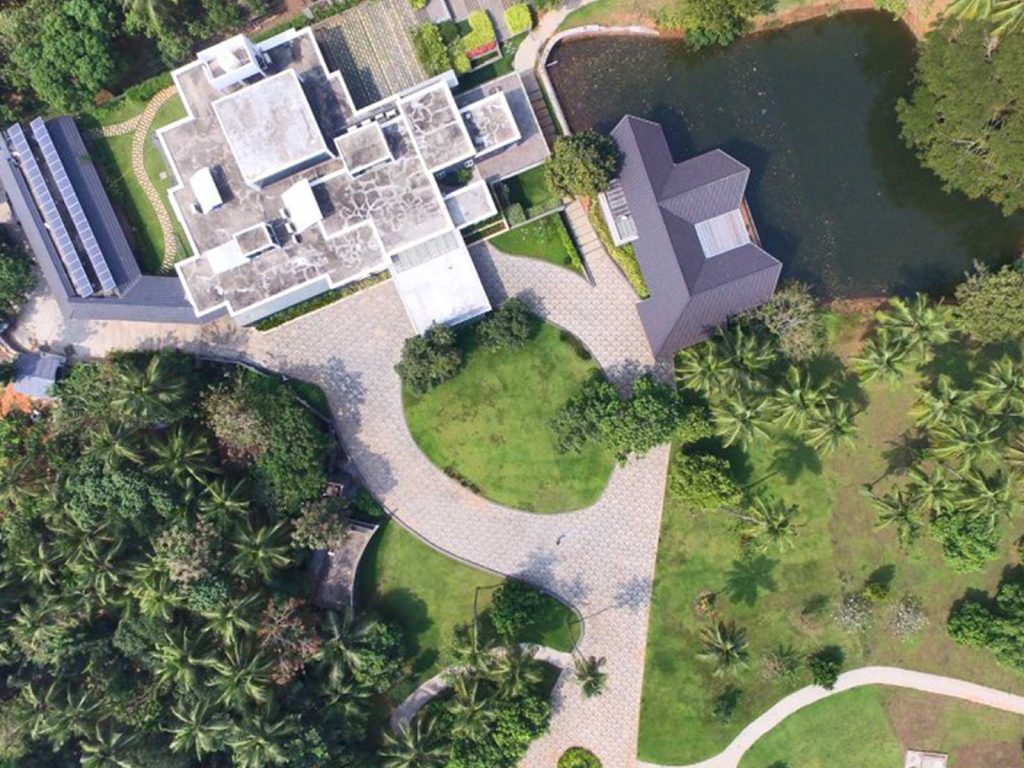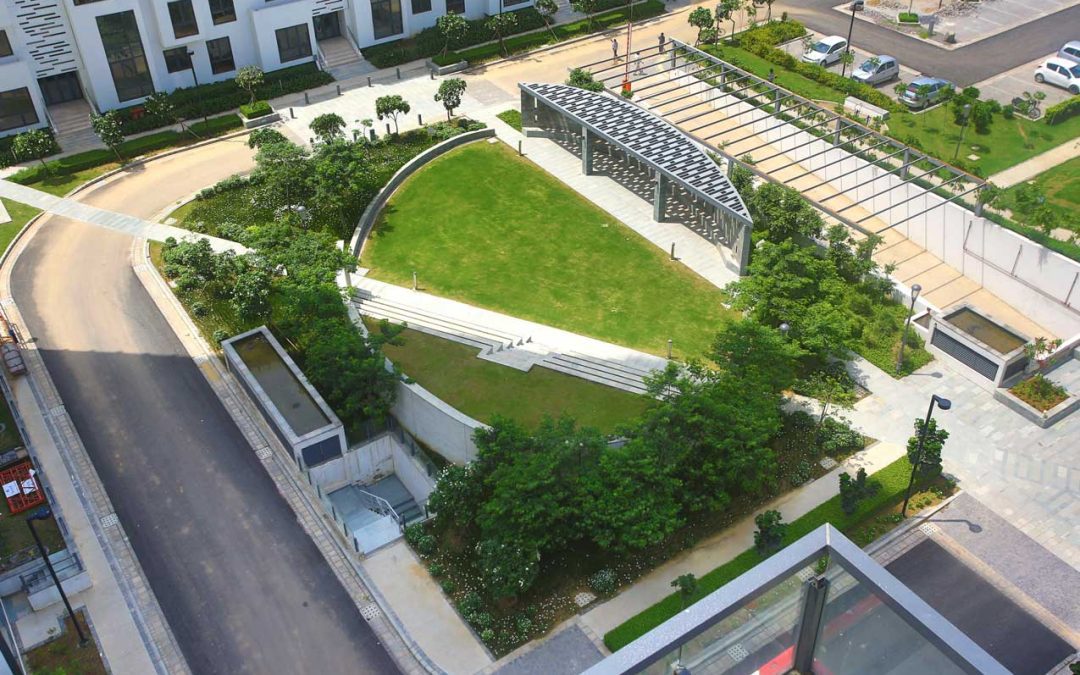Biophilic design in landscaping is not a new practice. In fact, it’s been around for thousands of years, before the surgence of modern landscapers and eco-friendly practices.
Biophilia based landscaping is focused on principles of harmony and human-nature connection, but the most critical aspect of biophilic design in landscaping is that no design plan should ever feel disconnected from its environment. All landscape elements should complement each other and be seen as a whole, not separate pieces of aesthetically different designs.
All biophilic design patterns should include a direct experience with nature, like the use of natural light, water, fire, and the ecosystem around it. It should also have an indirect experience with nature, like images, natural colors, and natural shapes. Most importantly, it should be an experience of space and place, meaning that it should be transitional and organized and integrate ecological areas for its mobility. For example, a path in a courtyard incorporates a sidewalk that wraps around a pre-existing oak tree.
Design Strategies
Although not all biophilic design landscapes are set in stone, you can apply certain strategies to make biophilic spaces look enticing and natural, creating a balanced environment that appeals to the human senses. By using the six principles of biophilic design mentioned above, truly beautiful, cohesive spaces can be created. Some examples are:
Using natural elements, like building ponds, fountains, or waterfalls, prioritizing fluctuating water over stagnant ones to create a sensory feeling of calmness. Take advantage of the natural light by highlighting it with reflective colors or materials, using skylights, or mimicking natural light sources with low-glare electrical sources. The transition between shadows and light should feel dynamic, and the high contrast of good lighting brings attention to the rest of your landscape.
Use natural materials like bamboo, rock, clay, and stone and natural-leaning colors like browns and greens to bring texture and flexibility to your landscape. Make sure to highlight notable parts of your landscape and the areas around it, bring attention to them, and use transitional spaces like patios, foyers, or courtyards to create order and unite interiors with exteriors.
Utilizing shapes that mimic ecological structures makes a landscape look more creative and creates a connection between the surrounding environments. Most importantly, use vegetation to your advantage. Incorporate already available plants into your design or bring them to achieve biodiversity and provide accessible green spaces and cover space.

Benefits of Biophilic Landscaping
There are many ecological and personal benefits of biophilic design. Aside from taking advantage of natural spaces and creating a sustainable, renewable, and organic space that doesn’t create fossil fuels or damage the environment, it also reinforces positive psychological and overall health changes.
Biophilia has proved to reduce stress and mental fatigue, making it ideal for working environments, health centers, recreational spaces, and even your own home. A biophilic landscape boosts concentration, improves social interaction, reduces hostility and aggression, enhances physical fitness, lowers blood pressure, increases comfort, reduces anxiety, improves problem-solving, and promotes a healthier living.
Aside from its health and ecological advantage, biophilic landscape design is also cost-effective and a reliable way to use renewable materials in outdoor design, avoiding using non-recyclable plastics and non-biodegradable matter.
All-in-all, biophilic landscape design can bring many benefits and uniqueness to your outdoors and indoors. Biophilia is such a rich and well-studied design form that in this day and age of ecological catastrophe, it’s crucial to incorporate the environment into your build plans.
Bringing environmental materials to enrich your space and taking advantage of the physical and psychological factors in the atmosphere has proven to make sustainable and eco-friendly living spaces. Biophilia is the present and the future of landscape design.


Recent Comments